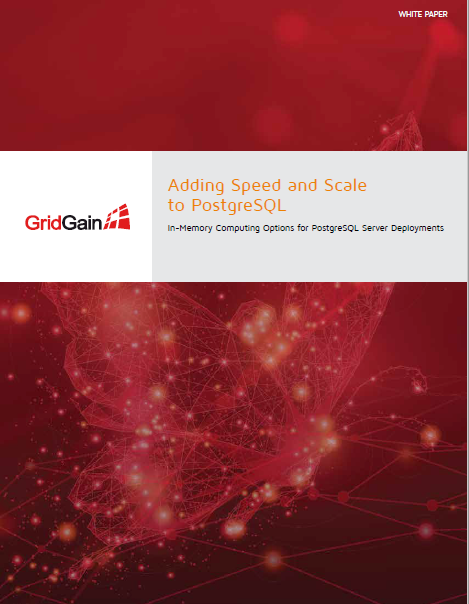PostgreSQL Speed and Scale Options with In-Memory Computing
This white paper explains how to use in-memory computing to add PostgreSQL speed and scale options to end-to-end IT infrastructure—both from PostgreSQL-centric vendors and from other open source and third-party products. It also explains how to evolve your architecture over time to both increase speed and scale and help create flexible IT infrastructure that supports digital business and other new technology initiatives.
PostgreSQL is one of the most popular open source databases. There are over thirty different distributions and products built on PostgreSQL. These products give companies many options: almost too many to choose from when growing their PostgreSQL deployments.
Companies using PostgreSQL face many changes with the increased need for more and faster data:
- Scalability. Over the last decade, the adoption of digital business, IoT and other new technologies has increased query and transaction loads 10-1000x, and the amount of data collected by 50x.
- Speed. Customer-facing web and mobile apps, and their underlying APIs, all require sub-second roundtrip latencies. In addition, the amount of data needed for different analytics and other computing types--including machine and deep learning--has become too big to move quickly enough over the network.
- New business initiatives. Changes to improve the end-to-end customer experience require the delivery of new capabilities in days or weeks rather than months or years. But most existing applications take months for just minor changes. Most applications also do not support many newer technologies such as streaming analytics or machine and deep learning.
Download this white paper now to learn how GridGain in-memory computing can increase the speed and scale of your PostgreSQL deployment.
